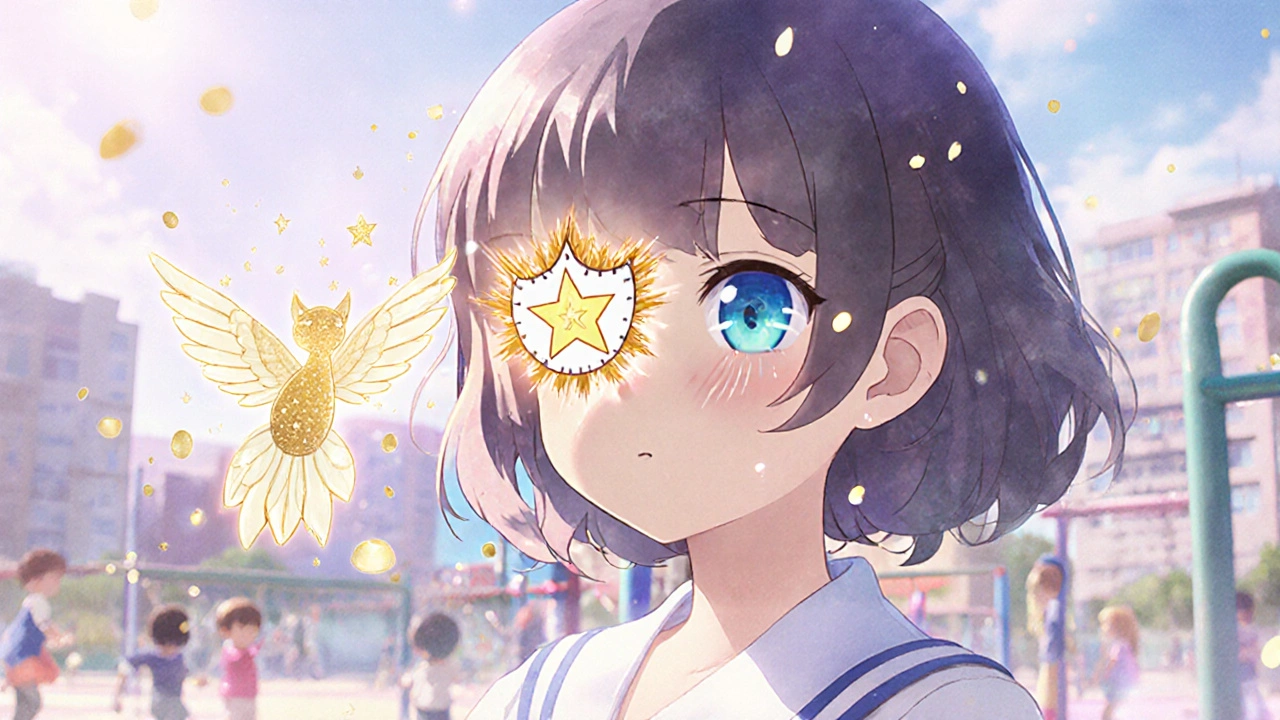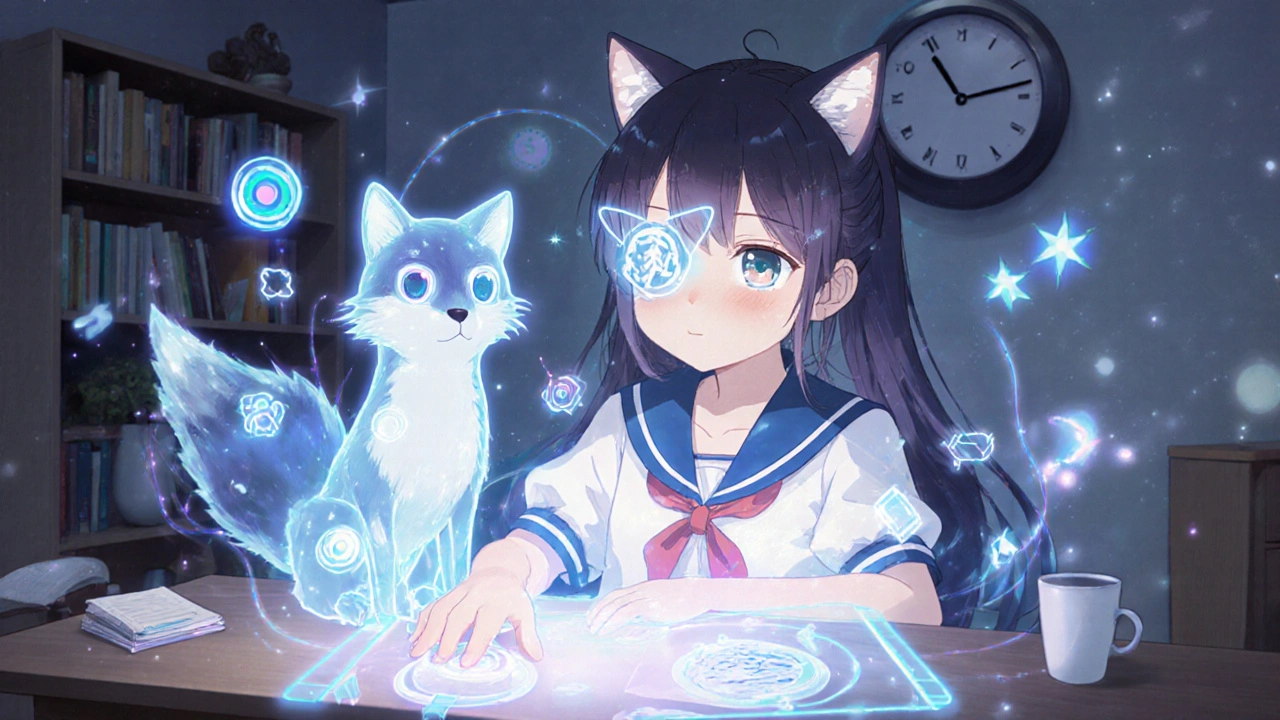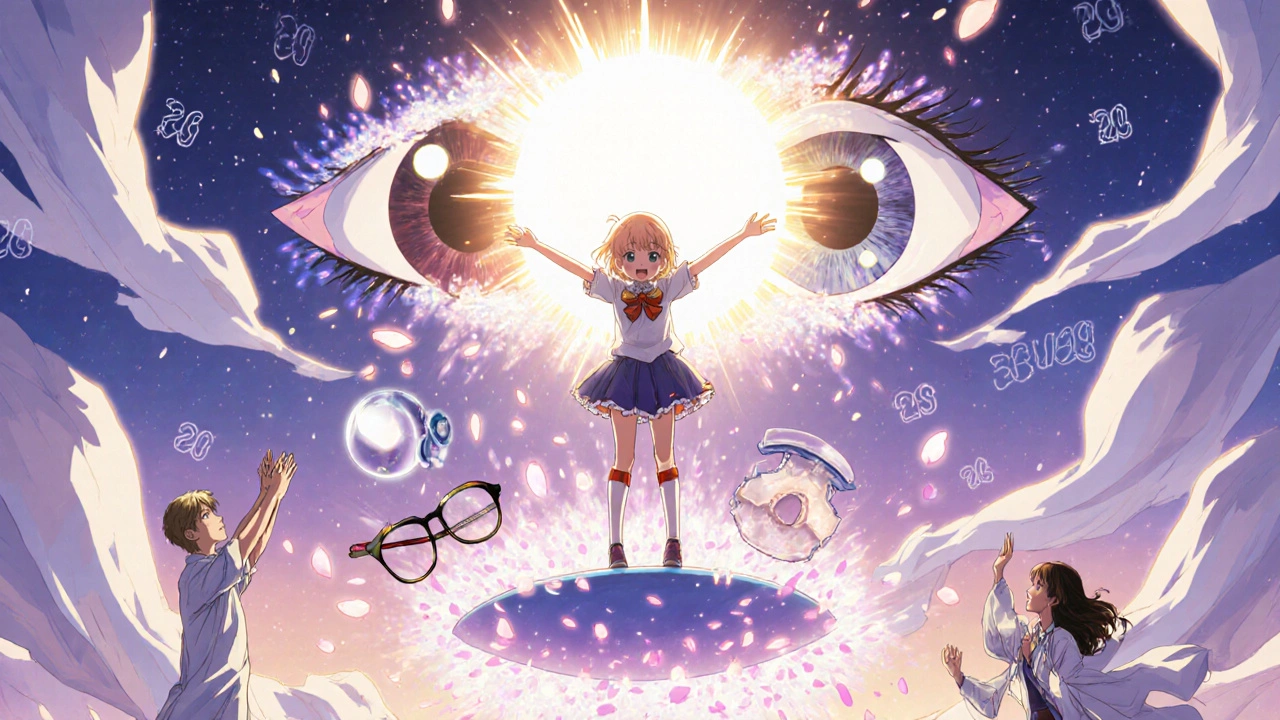 Nov, 19 2025
Nov, 19 2025
When a child’s brain starts ignoring one eye, it’s not just a lazy eye-it’s a serious problem in how vision develops. This condition, called amblyopia, affects 2% to 4% of all children. It’s the most common cause of vision loss in kids, yet many parents don’t recognize the signs until it’s too late. The good news? With early detection and the right treatment, most children can regain clear, balanced vision. Patching therapy is still the most proven way to fix it, but it’s not as simple as slapping an eye patch on and waiting. Success depends on timing, consistency, and understanding how the brain learns to see.
What Exactly Is Amblyopia?
Amblyopia isn’t a problem with the eye itself. It’s a brain issue. When a child’s eyes send different or blurry images to the brain during the first few years of life, the brain starts to ignore the weaker eye to avoid confusion. Over time, that eye loses its connection to the brain. Even if you correct the eye’s focus with glasses, the vision won’t improve because the brain hasn’t learned to use it. This is why glasses alone won’t fix amblyopia. There are three main types:- Strabismic amblyopia (about half of cases): When one eye turns inward, outward, up, or down, the brain shuts off that eye to avoid double vision.
- Anisometropic amblyopia (about 30%): One eye has a much stronger prescription than the other. The brain favors the clearer image, and the blurry eye fades.
- Deprivation amblyopia (10-15%): Something physically blocks light from entering the eye-like a cataract, droopy eyelid, or scar on the cornea. This is the most serious type and needs urgent treatment.
Even kids with no obvious eye turn or glasses need screening. Some cases are hidden. That’s why the American Academy of Pediatrics recommends all children get a full eye exam by age 3.
Why Timing Matters More Than Anything
The brain’s ability to rewire itself-called neuroplasticity-is strongest between birth and age 5. That’s the sweet spot for treatment. Kids treated before age 5 have an 85-90% chance of recovering near-normal vision. Between ages 5 and 7, that drops to 50-60%. After age 8, improvement becomes much harder, and full recovery is rare. But here’s the myth that needs busting: It’s not over at age 7. A 2013 study from the American Academy of Family Physicians showed kids as old as 10 can still improve with treatment. The key isn’t a hard cutoff-it’s how much the brain still has left to learn. The earlier you start, the better the results. But it’s never too late to try.Patching Therapy: The Gold Standard
Patching means covering the stronger eye to force the brain to use the weaker one. Sounds simple, right? But it’s not just about wearing the patch-it’s about how you do it. The landmark Amblyopia Treatment Study (ATS) found something surprising: For moderate amblyopia (vision between 20/40 and 20/100), just 2 hours of daily patching worked just as well as 6 hours. That’s a game-changer. Less time on the patch means less stress for kids and parents. But here’s the catch: Only 40-60% of kids stick with it. Why? Because patches itch. Kids get teased. Parents feel guilty. Some kids rip them off. That’s why treatment isn’t just medical-it’s behavioral. Successful families use tricks like:- Putting patching into daily routines-like after lunch or before bedtime.
- Using reward charts with stickers or small prizes.
- Letting kids choose fun patch designs-superheroes, animals, glitter.
- Turning patching into a game-"Who can wear their patch the longest?"
Apps like LazyEye Tracker help parents log hours and get reminders. In 2022, 22% of pediatric eye clinics in the U.S. started using them. Compliance jumped by 30% in practices that did.
Alternatives to Patching
Not every kid can handle a patch. That’s where other options come in. Atropine drops are a popular alternative. You put one drop in the stronger eye every day. It blurs near vision (like reading or screen time), so the brain turns to the weaker eye. The ATS found atropine worked just as well as patching for moderate cases, and 79% of kids reached 20/30 vision or better in 6 months. Plus, no one can see the eye is covered-big win for kids who hate the stigma. Bangerter filters are thin, frosted stickers you put on glasses over the strong eye. They blur vision slightly without looking like a patch. They work for about 60-70% of kids, especially older ones who refuse patches. But they’re less effective for severe cases. Digital therapy is the new frontier. Apps like AmblyoPlay turn vision exercises into video games. Kids play for 30 minutes a day, doing tasks that force both eyes to work together-tracking moving objects, matching shapes, focusing on targets. A 2023 study showed 75% compliance with digital therapy, compared to 40% with patches. The FDA cleared AmblyoPlay in 2021, and clinics in Europe report better outcomes when used with patching.
What About Vision Therapy?
Vision therapy isn’t just patching. It’s active training. A therapist guides kids through exercises to improve eye tracking, focusing, and depth perception. These sessions happen 2-3 times a week for 12 to 24 weeks, with daily home practice. Studies from Fox Eye Care Group show that when vision therapy is added to patching, kids gain 15-20% more in depth vision (stereopsis) than with patching alone. That’s not just seeing clearly-it’s seeing in 3D. It helps with sports, reading, and even social confidence. It’s not a replacement for patching, but a powerful add-on-especially for kids with strabismus or those who’ve had patching but still struggle with depth perception.When Surgery Is Needed
If a child has strabismic amblyopia and their eye turns badly, patching won’t fix the misalignment. Surgery may be needed first to straighten the eye. After surgery, patching still follows-70-80% of these kids need it to get the best vision. The surgery doesn’t cure amblyopia; it just makes patching possible. Same goes for deprivation amblyopia. If a cataract is blocking vision, it must be removed before any patching or training can begin. Timing is critical. The longer the blockage lasts, the harder it is to recover vision.How Long Does Treatment Last?
Most kids need treatment for 6 to 12 months. Some need it longer. You can’t just stop when vision improves to 20/20. The brain needs time to stabilize the connection. Stopping too early is a common reason vision slips back. Follow-up visits every 4 to 8 weeks are non-negotiable. Eye doctors measure vision, check for side effects, and adjust patch time based on progress. If vision plateaus, they might switch from patching to atropine or add digital therapy.
What About Adults?
Adults with untreated amblyopia used to be told, "Too late." But new research is changing that. Studies from Massachusetts Eye and Ear show that with intensive perceptual learning-like hours of computer-based visual tasks-some adults can improve vision by 1-2 lines on the eye chart. It’s not a full cure, but it’s something. The brain is less flexible after childhood, but it’s not dead. For adults with amblyopia, treatment now focuses on improving daily function-not perfect vision. Better depth perception helps with driving, reading small print, or even just feeling more confident in crowded places.What Parents Should Do
If your child has any risk factors-premature birth, low birth weight, family history of amblyopia, or developmental delays-don’t wait. Get an eye exam by age 3. Even if they seem to see fine. If your child is diagnosed:- Start treatment immediately. Every week counts.
- Don’t skip follow-ups. Progress is measured in small steps.
- Work with your doctor to find a method your child can stick with-patch, drops, or digital therapy.
- Connect with other parents. Support groups make a huge difference.
- Be patient. Improvement takes months, not days.
Most kids with amblyopia will improve with treatment. The American Academy of Ophthalmology says 97% see some gain. But only 65-75% reach full 20/20 vision. That’s why early action is everything.
What’s Next for Amblyopia Treatment?
The future is blending old and new. Patching is still the foundation. But now it’s being boosted by:- Weekend-only atropine (just one drop Saturday and Sunday) to maintain results without daily hassle.
- Transcranial random noise stimulation (tRNS)-a tiny electrical pulse to the brain that boosts learning. Early trials show 40% more improvement when paired with patching.
- AI-powered apps that adjust difficulty in real time based on how the child performs.
Industry analysts predict the amblyopia treatment market will grow 6.2% per year through 2028. That’s not just because more kids are being diagnosed-it’s because better, less invasive tools are finally here.
But no matter how fancy the tech gets, the core truth hasn’t changed: The brain learns vision early. Catch it early. Treat it early. And don’t give up.
Can amblyopia go away on its own?
No. Amblyopia won’t fix itself. The brain keeps ignoring the weaker eye, and vision gets worse over time. Without treatment, the affected eye may never develop normal sight, even if glasses or surgery correct the eye’s physical problem. Early intervention is the only way to reverse it.
Is patching painful or dangerous?
Patching isn’t painful, but it can cause mild skin irritation or discomfort from the adhesive. Some kids feel frustrated or self-conscious. These are behavioral challenges, not medical risks. Using hypoallergenic patches, rotating placement, and giving breaks can reduce irritation. There’s no damage to the patched eye-just temporary blurring to strengthen the weaker one.
How do I know if my child has amblyopia?
Signs include squinting, tilting the head, closing one eye to see, poor depth perception (bumping into things), or one eye that looks misaligned. But many kids show no obvious signs. That’s why routine eye exams by age 3 are critical. A simple vision screening at school or pediatric checkup isn’t enough-only a full eye exam by an optometrist or ophthalmologist can diagnose it.
Can glasses fix amblyopia?
Glasses can correct the blurry vision that causes amblyopia, but they don’t fix the brain’s suppression of the eye. For anisometropic amblyopia, glasses are the first step-but patching or atropine is still needed to train the brain to use the weaker eye. Without that extra step, vision won’t fully improve.
How long should my child wear the patch each day?
It depends on severity and age. For moderate amblyopia, 2 hours a day is now the standard based on strong clinical evidence. For severe cases, doctors may recommend 4-6 hours. The goal isn’t to wear it as long as possible-it’s to wear it enough to stimulate the weaker eye without causing stress or burnout. Your eye doctor will adjust based on progress.
What happens if we stop patching too soon?
Vision can regress. The brain may go back to ignoring the weaker eye, especially if treatment was stopped before the connection was fully strengthened. Most kids need at least 6 months of consistent therapy. Even after vision improves, doctors often recommend tapering patching slowly over weeks-not stopping cold. Regular check-ups are key to preventing relapse.
Are digital therapies as effective as patching?
For mild to moderate amblyopia, digital therapies like AmblyoPlay show similar results to patching in clinical trials-with much higher compliance. They’re especially helpful for kids who resist patches. However, for severe cases or when there’s a physical blockage (like a cataract), patching or surgery may still be needed first. Digital tools work best as a supplement or alternative when patching isn’t working.
Can adults still be treated for amblyopia?
Yes, but results are more limited. Adults can improve vision through intensive perceptual learning-like computer games designed to train the brain’s visual pathways. Gains are usually modest (1-2 lines on the eye chart), but they can improve daily tasks like driving or reading. The brain is less plastic after childhood, but it’s not fixed. Treatment for adults focuses on function, not perfection.
Dion Hetemi
November 19, 2025 AT 19:20Let me get this straight-we’re spending millions on digital games and electrical brain zaps to fix what a $2 patch and 2 hours a day could’ve solved? Classic American over-engineering. At least in my day, we just taped a sock over the good eye and called it a day. No apps. No stickers. Just grit, a parent who didn’t coddle, and the threat of losing screen time. Kids today think ‘treatment’ means a Netflix show with blinking dots. Meanwhile, their vision’s still trash.
river weiss
November 20, 2025 AT 04:22It’s critical to emphasize that amblyopia treatment is not merely a medical intervention-it is a neurodevelopmental process requiring sustained, structured engagement from caregivers. The data from the Amblyopia Treatment Study remains robust: two hours of daily occlusion is non-inferior to six hours for moderate cases, and adherence is the single greatest predictor of outcome. Parental consistency, not technological novelty, drives success. Digital tools may enhance compliance, but they do not replace the fundamental principle: force the brain to use the weaker eye. No shortcut exists.
Andy Feltus
November 21, 2025 AT 02:19It’s funny how we treat kids’ vision like it’s a software bug you can patch. The brain doesn’t ‘learn’ vision-it reorganizes itself under pressure. And we act surprised when it resists? We give kids a patch and then act like we’re doing them a favor by letting them pick superhero designs. Meanwhile, the real work is in the quiet, boring, daily repetition that no TikTok video will ever celebrate. We’ve turned neuroplasticity into a marketing campaign. The science is clear. The execution? Still a mess.
Brian Rono
November 22, 2025 AT 20:15Let’s be brutally honest: if you’re still using patching as a first-line intervention in 2025, you’re not a clinician-you’re a relic. Atropine? Fine. Digital therapy? Acceptable. But patching? It’s the equivalent of treating diabetes with leeches. The fact that 60% of kids refuse it isn’t a behavioral problem-it’s a testament to its archaic, humiliating, and frankly, outdated nature. We’re clinging to a 1970s solution because it’s cheap, not because it’s effective. The future isn’t patches-it’s targeted neurostimulation, AI-driven adaptive games, and pharmacological modulation. If your clinic still has a ‘patch decoration wall,’ you’re part of the problem.
Dana Dolan
November 24, 2025 AT 20:12my kid had amblyopia and we did the patch thing for 8 months... honestly? it was hell. but we used glitter ones and a reward chart with gummy bears. she cried every day. but now she can see the whiteboard from the back of the class. worth it. also, the drops made her pupil huge and she looked like a cat for a week. weird but better than the patch. ps: i miss the gummy bears.
seamus moginie
November 26, 2025 AT 17:33Yer right about the timing, but yer forgettin’ the real enemy: school nurses who think a Snellen chart at age 5 is enough. My cousin’s kid had a 20/80 eye and the school said ‘he’ll grow outta it.’ He was 7. By the time they got to a real doc? 18 months lost. No one checks kids’ eyes properly until they’re failing math because they can’t read the board. Fix the system, not just the patch.
Zac Gray
November 28, 2025 AT 01:43Look, I get it-patching is annoying. Kids hate it. Parents feel guilty. But here’s the thing: you’re not just treating an eye-you’re rewiring a brain. And brains don’t care about your schedule, your Instagram feed, or how ‘inclusive’ your patch designs are. They care about consistent, boring, repetitive input. That’s why digital therapy works better-because it’s engaging. But it’s not magic. It’s still the same principle: force the lazy eye to work. And if your kid’s doing 30 minutes of AmblyoPlay while watching cartoons? You’re not helping. You’re just giving them a fancy distraction. The brain needs focus, not entertainment. So yes, it’s hard. So what? Parenting is hard. Vision recovery? Even harder.
Kara Binning
November 29, 2025 AT 14:37MY SON WAS DIAGNOSED AT AGE 6 AND WE DID PATCHING FOR 14 MONTHS AND HE STILL CAN’T SEE IN 3D AND I’M SO ANGRY NOW THAT WE WASTED ALL THAT TIME AND MONEY AND NO ONE TOLD US THE TRUTH THAT HE’D NEVER BE FULLY NORMAL AND NOW HE’S 10 AND THEY SAY ‘IT’S TOO LATE’ BUT I’M STILL TRYING BECAUSE I WON’T GIVE UP AND IF YOU’RE A DOCTOR WHO THINKS IT’S OVER AT 8 YOU’RE A LOSER AND I HOPE YOU GET AMBLYOPIA IN YOUR OTHER EYE